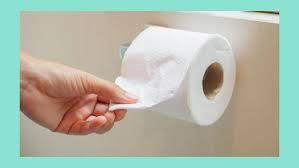Introduction:
In the realm of everyday essentials, few items are as ubiquitous and indispensable as toilet paper. This unassuming roll, often taken for granted, plays a crucial role in our daily lives. As we embark on an exploration of the history and innovation of toilet paper, we find ourselves unraveling layers of not only the paper itself but also the intriguing stories and developments behind its existence.
The Origins of Toilet Paper:
The history of toilet paper dates back centuries, with various cultures employing different materials for personal hygiene. Ancient Romans, for instance, used a sponge on a stick, while others used leaves, grass, or even stones. The evolution toward the soft, comforting toilet paper we know today is a fascinating journey through time and innovation.
The first recorded use of paper for hygiene purposes can be traced back to 6th-century China during the Tang Dynasty. However, it wasn't until the 14th century that the Chinese government officially produced paper for toilet use. Fast forward to the 19th century, and the Western world started to catch on, albeit slowly.
Innovation in the 19th Century:
The 19th century marked a turning point in the evolution of toilet paper. Joseph Gayetty, an American inventor, introduced the first commercially available toilet paper in 1857. His product, known as "Gayetty's Medicated Paper," was infused with aloe and sold in flat sheets. While Gayetty's invention laid the foundation for modern toilet paper, it was still a far cry from the rolls we're familiar with today.
The Advent of Rolled Toilet Paper:
The shift from flat sheets to rolled toilet paper is credited to the Scott Paper Company, which introduced the first perforated toilet paper roll in 1890. This innovation revolutionized the way people approached personal hygiene and set the standard for the toilet paper format we use today.
The Marketing Revolution:
As toilet paper became more widely adopted, manufacturers began to explore marketing strategies to distinguish their products. Colorful packaging, softer textures, and scented variations entered the market, giving consumers a plethora of choices. The iconic squeezable Charmin bears, introduced in the 1960s, became beloved mascots, adding a touch of humor to the bathroom experience.
Environmental Considerations:
In recent years, the environmental impact of traditional toilet paper has come under scrutiny. The demand for more sustainable alternatives has given rise to recycled toilet paper and bamboo-based options. These innovations aim to reduce the ecological footprint associated with toilet paper production and promote a more eco-friendly approach to personal hygiene.
The Toilet Paper Roll Art Movement:
Beyond its functional role, toilet paper has also found a place in the realm of art. The Toilet Paper Roll Art Movement, which gained popularity in the early 21st century, sees artists transforming empty rolls into intricate sculptures. This unconventional medium has become a platform for creativity and self-expression, proving that even the most ordinary objects can inspire extraordinary art.
Conclusion:
As we reach the end of this unexpected journey through the history and innovation of toilet paper, we are reminded that even the most mundane items can have a rich and fascinating backstory. From ancient civilizations using whatever materials were at hand to the modern rolls we have today, toilet paper has undergone a remarkable transformation.
So the next time you find yourself reaching for a roll, take a moment to appreciate the layers of history, innovation, and even art that are intertwined with this seemingly simple bathroom essential. After all, even on toilet paper, stories can be written, and history can be unraveled, one square at a time.
